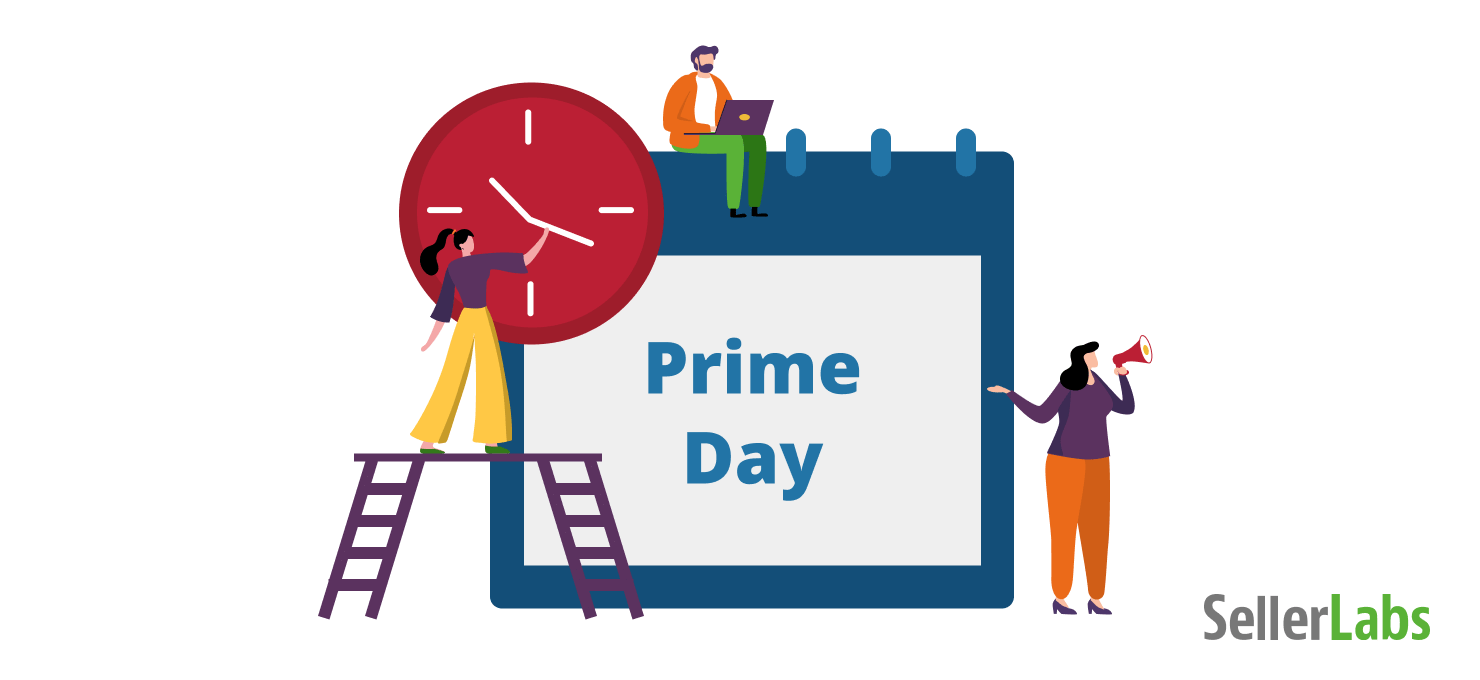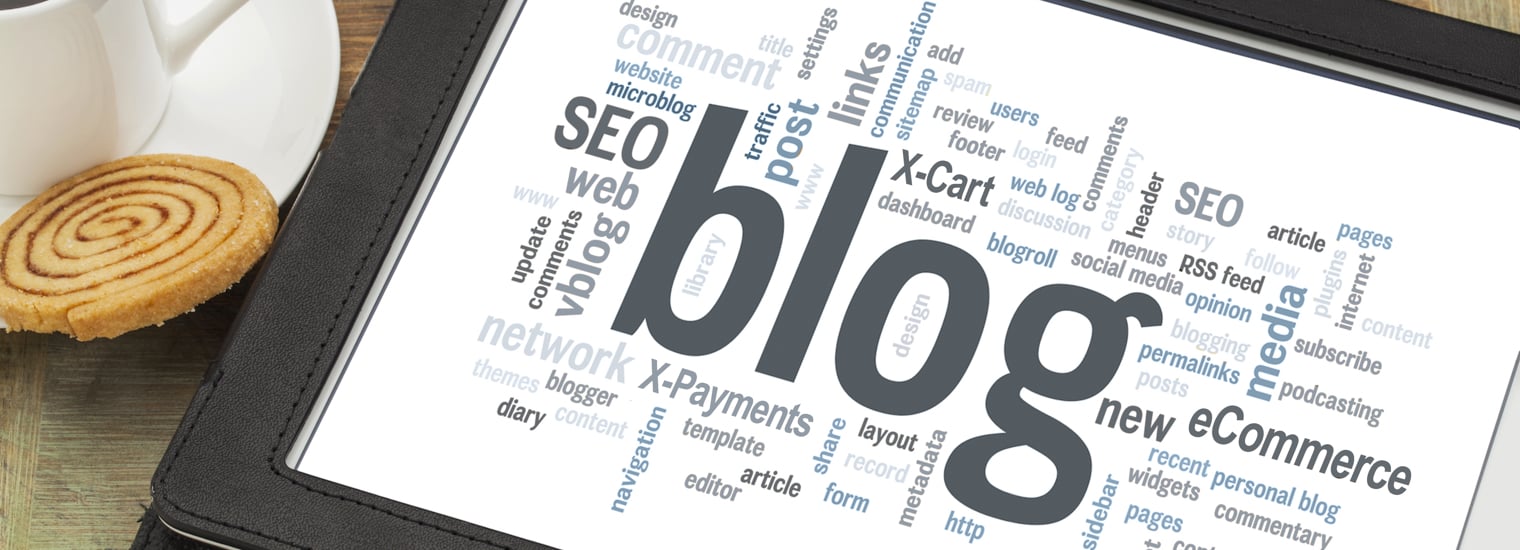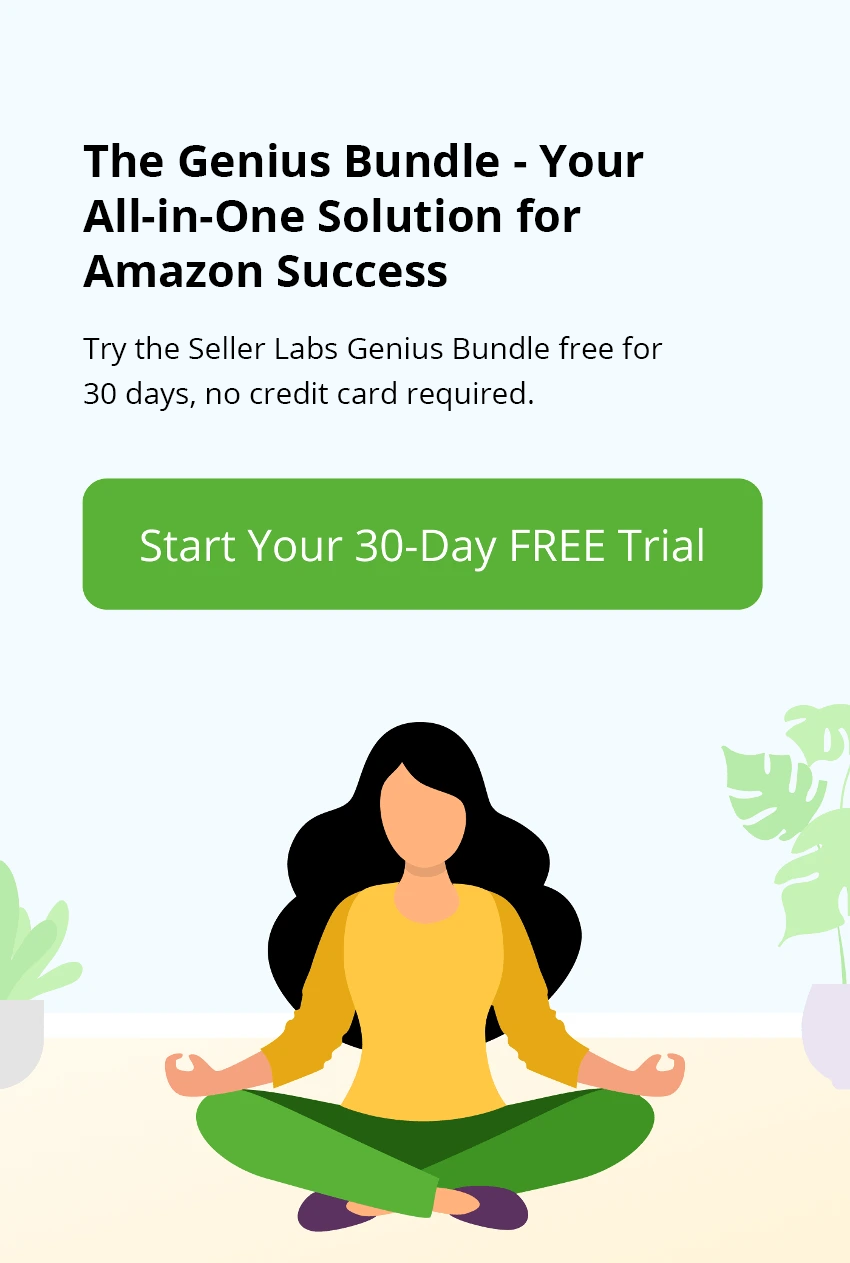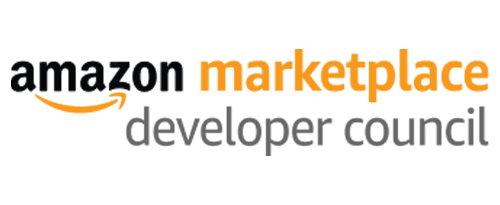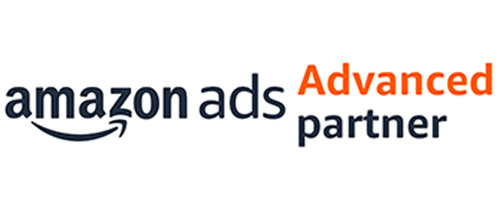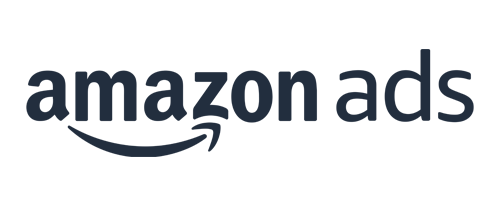Amazon Prime Day is the retailer’s biggest traffic event of the summer, essentially Christmas in July. In 2020, Prime Day moved to October (creating the biggest Q4 the brand has ever seen).
JUST ANNOUNCED: Amazon Prime Day 2021 is officially scheduled for June 21 and 22 (Monday & Tuesday).
If you’re looking for inspiration on how to make the most of Prime Day 2021, check out this webinar replay! We gathered a few of our Amazon and Managed Services experts for a live “AMA” all about Prime Day.
CHAPTER I Key Dates for Prime Day 2021
Prime Exclusive Discount Sourcing Starts
- March 29, 2021: Sourcing for prime discounts will end two weeks prior to Prime Day. Based on the past, we’d estimate the sourcing will wrap up at the end of June.
Deadline to Submit Lightning Deals
- April 16, 2021: Deadline to submit Lightning Deals for Amazon North America marketplaces.
- April 23, 2021: Deadline to submit Lightning Deals in Amazon Europe marketplaces, Turkey, UAE, Saudi Arabia, Japan, and Australia.
Deadline to Submit Coupons
- May 28, 2021: Deadline to submit coupons in all previously listed marketplaces.
FBA Inventory Cut-Off Dates for Sellers
- May 30, 2021: Inventory must have arrived at FBA Fulfillment Centers for India
- May 31, 2021: Inventory must have arrived at FBA Fulfillment Centers for Amazon US & CA
- June 1, 2021: Inventory must have arrived at FBA Fulfillment Centers for Australia & Mexico
- June 6, 2021: Inventory must have arrived at FBA Fulfillment Centers for UK, Germany, France, Italy, Spain, the Netherlands, and Turkey
- June 7, 2021: Inventory must have arrived at FBA Fulfillment Centers for UAE & Saudi Arabia
- June 13, 2021: Inventory must have arrived at FBA Fulfillment Centers for Japan
CHAPTER II Key Terms & Promotion Opportunities for Prime Day
Amazon has rolled out quite a few different promotion opportunities for sellers over the years. It can be a challenge to keep up with them, so here are those most relevant for the shopping event.
A price discount that is widely used across all nationally Prime shipping eligible FBA products and is exclusive to Prime members. For the shopping event, these products will display a “Prime Day Deals” badge.
A point of sale discount that is widely used across all Retail product categories and is exclusive to Prime members. For the shopping event, these products will be part of the “Amazon Prime Day” and “Today’s Deals” pages and also display a “Prime Day Deals” badge.
A price discount promotion that is accessible for several hours as a flash sale on the Amazon deals page. Only one product can be included per Lightning Deal, but you can include multiple variations on the deal.
Accessible on the product detail page and the Amazon vouchers page. Customers can click the voucher to add the product to their cart, and the discount is automatically applied at checkout.
Keep in mind that you do not have to have a Prime Day Lightning Deal or offer a gift card coupon in order to have a successful Prime Day sale. There will naturally be a tremendous influx of shoppers to Amazon, and trends tend to change.
Remember, the majority of shopping is impulsive. Yes, there are shoppers waiting for a specific product to go on sale, but a large portion of shoppers just love a good deal. We want you to be prepared.
CHAPTER III 7 Tips to Take Advantage of Amazon Prime Day 2021
1.Use Unofficial Deals
Amazon will start ramping up advertisements for Prime Day weeks before the event. Assuming you’re fully optimized and you’re not running a Prime Day deal, there are several ways you can take advantage of the uptick in traffic. Some rules to remember:
- Shoppers will always be price-conscious, especially when it comes to Amazon. Offer discounts off the price instead of a buy-one, get-one deal. Price will usually beat coupons and on-page promotions. The only exception is when prices are close and shoppers are passionate about a particular brand.
- Price competitively and very flexibly if you want to win the Buy Box. If you’re not already automating pricing, learn how to set the auto-pricing rules. For more information about the Buy Box, read our full guide:
2. Optimize Your Amazon Product Listings
First and foremost, you need to optimize your Amazon product listings to reflect the product and not the offer. On Amazon, everyone’s offer is combined onto a single product detail page, which is what makes it a product-focused marketplace. If you’re the brand owner, you control that page. If you’re a reseller, you only control your offer.
The product detail page is precisely that: all about the details of the product. Brands participating in Amazon Brand Registry can tell their stories with A+ Content. Detail pages must be directly related to that product. And as a note, sellers can’t add anything to their product detail pages that mention Prime Day specials, deals, etc. as this is a violation of Amazon’s Terms of Service.
3. Optimize Your Product Images
Make sure you optimize your product images for conversion. Study the product images of any top-selling product and you’ll notice the images are more like magazine ads. Obviously, the first image has to be on a white background, but all of the other images should explain the key features.
Assume shoppers will look at images before reading the bullet points. Update your product images based on what you find. Consider amping up your Amazon product listings by adding 360-degree images and livestreams.
4. Don’t Raise Your List Price to Show a Greater Discount
Shoppers are savvier than ever. They use extensions like Honey to track pricing. Manipulating your list price in order to get a certain percentage off is a dodgy tactic and it’s legally questionable too. Don’t risk suspension by dabbling in the dark arts of Amazon black-hat tactics.
Customers usually know what a product costs. Inflating your sales price will prevent potential sales. If you can’t discount, then make sure your product demonstrates all of the right reasons as to why someone would pay more for it.
5. Run Amazon Sponsored Ads
Make sure you’ve fully optimized your product listing page before you put any money into Amazon PPC campaigns. You want your detail page to have the keywords that will covert and bring shoppers to your page.
Advertising Tip
We do not recommend bidding on keywords like “Prime Day” around the sale. The competition is too severe, and will result in a large waste of ad spend.
Amazon knows that Prime Day will bring lots of revenue. To get a full return on your ad spend on Prime Day, you need to be extremely vigilant and look at your bid maximums This isn’t the time to set PPC and forget it.
Think about all of the traffic Amazon is going to receive. How quickly will you burn through your advertising budget before you know the actual performance? This is why running ads leading up to Prime Day is important. Read our full PPC guide for tips.
6. Run Off-Amazon Promotions
Focus on driving external traffic to your Amazon Prime Day deals. One of the best indicators for sales rank and search rank are the additions of items to wish lists, off-Amazon traffic to Amazon, and affiliates. You need to understand who the influencers are in your space.
If you have an audience outside of Amazon (like email lists or Facebook groups), invite them to come partake in your deals. This strategy is only useful if you have an affinity group set up. Facebook ads will help sellers who don’t have a group or audience, but remember that Facebook ads will be difficult to attribute into your products’ profits and losses report in a short amount of time. If you’re not doing this already, you should start.
7. Take Advantage of the Halo Effect
The sales you generate on Prime Day are going to help with your organic ranking, and set you up for success in the later parts of the year. You can boost your non-Prime Day deals by running targeted ads for high-traffic keywords to move all of your products up by momentum.
Identify if your product is linked to another product in the “Frequently purchased together” section. This works two ways because if you want to generate sales for a key product you can bid on it knowing that your lesser product is getting free spillover traffic from the key product’s detail page.
As the saying goes, “a rising tide lifts all ships.” The success of one product can grow your sales if you know where to look and what keywords to target.
CHAPTER IV Sell Better on Amazon – Even After Prime Day Sales
Now, while Prime Day is an integral piece of many brands’ success strategies, it can’t be the end-all, be-all. Relying on one shopping holiday is not the parachute to save your business. Test out these alternatives outside Amazon to give your brand a boost from all directions.
1. Test a Sale Price
However, you can always offer a sale price on a listing, even when coupons have been disabled (like they were in response to the coronavirus pandemic). Lightning deals and special offers need to be approved for Prime Day 2020, so running a sale price is a great option for brands who have missed the deadline or didn’t get approved.
2. Use Coupons
Good news! Coupons are back in Seller Central! As of May 12, we noticed this functionality open back up for sellers. Adding a coupon to your listing gives a visual cue to potential buyers that you have a sale. They are able to save money by choosing your product over a competitor’s.
Remember, you are charged per redemption on a coupon, so you will need to include this in your profit margins when creating it. You are not, however, charged for the separate “Promotions” area (discounts like Free Shipping, or Buy One, Get One).
3. Start Your Own Website
One of the main advantages of having your own website is that you own your customer right from the moment they land on your site. The message is yours. You don’t have competitors fighting on the listing or stealing advertising space.
Need help starting a website?
Talk to our friends over at X-Cart! We’ve got solutions for businesses of every size, and it’s completely customizable for your needs
4. Build Up Your Community!
How brands behave and interact with their customers says a lot about their core principles. Shoppers want to do business with companies they trust. The more of a relationship you are able to build with buyers or potential buyers, the more likely they are to purchase from from you.
When you have a community, you can also utilize it for product launches or to help give your listing a boost. Even Amazon understands the importance of having sellers build their own community – they’ve created “Social Media Promo Codes,” allowing a unique, customizable code that can be shared on landing pages or even with influencers.
Building a community looks very different to different businesses. For some, a presence on social media is enough. Other communities may require a little bit of effort, but just find a way to get your audience engaged.
Try a social media contest to have buyers post photos of your product in use. Then, you have a plethora of content to share back to the community (with the buyers’ permission of course).
5. Look into Merchant Fulfilled or 3PL Options
FBA has been a blessing for countless Amazon sellers. However, sellers experienced the stress of exclusively relying on this fulfillment last year. Those sellers who were able to pivot were more likely to be more successful.
Don’t wait for the next pandemic, logistics upset, or market turn to add these options to your wheelhouse. If Amazon is overwhelmed or inundated, how can you continue to provide for your buyers?
4. Partner with Others
If you have a game company, partner with a snack company and create a “Game Night Bundle.” Maybe you sell raised bed gardens and decide to work with a company who sells seeds to create a bundle.
It also doesn’t even need to be product bundling. So many online services, like Zoom or Google Meet, are becoming available to everyone for free. Find someone with complementary skills and hop on a Facebook Live. You’d be surprised at the massive impact humanizing your brand can have.
5. Get Creative
Shopper trends and search behavior change for a variety of reasons. It could be anything from a global pandemic or an upcoming holiday. Go beyond what you think your product is or does to how else it could be used.
Generally, in periods of big change, we’re likely to be shocked into doing nothing. “Well, what I’m doing is working right now, so I’m just going to keep doing it.” Those companies and brands who are able to adapt are the ones who will flourish.
Obviously, these recommendations go beyond Prime Day. Here at Seller Labs, our goal is to help you be prepared if anything like a pandemic should happen again (knock on wood).

